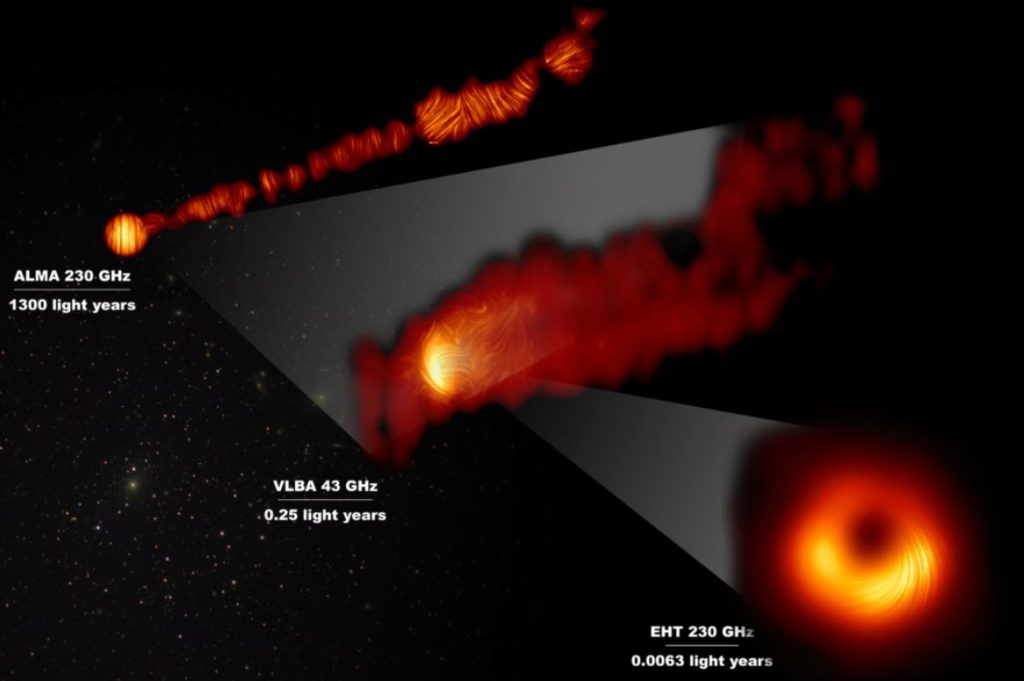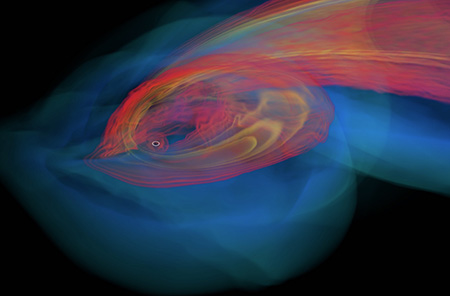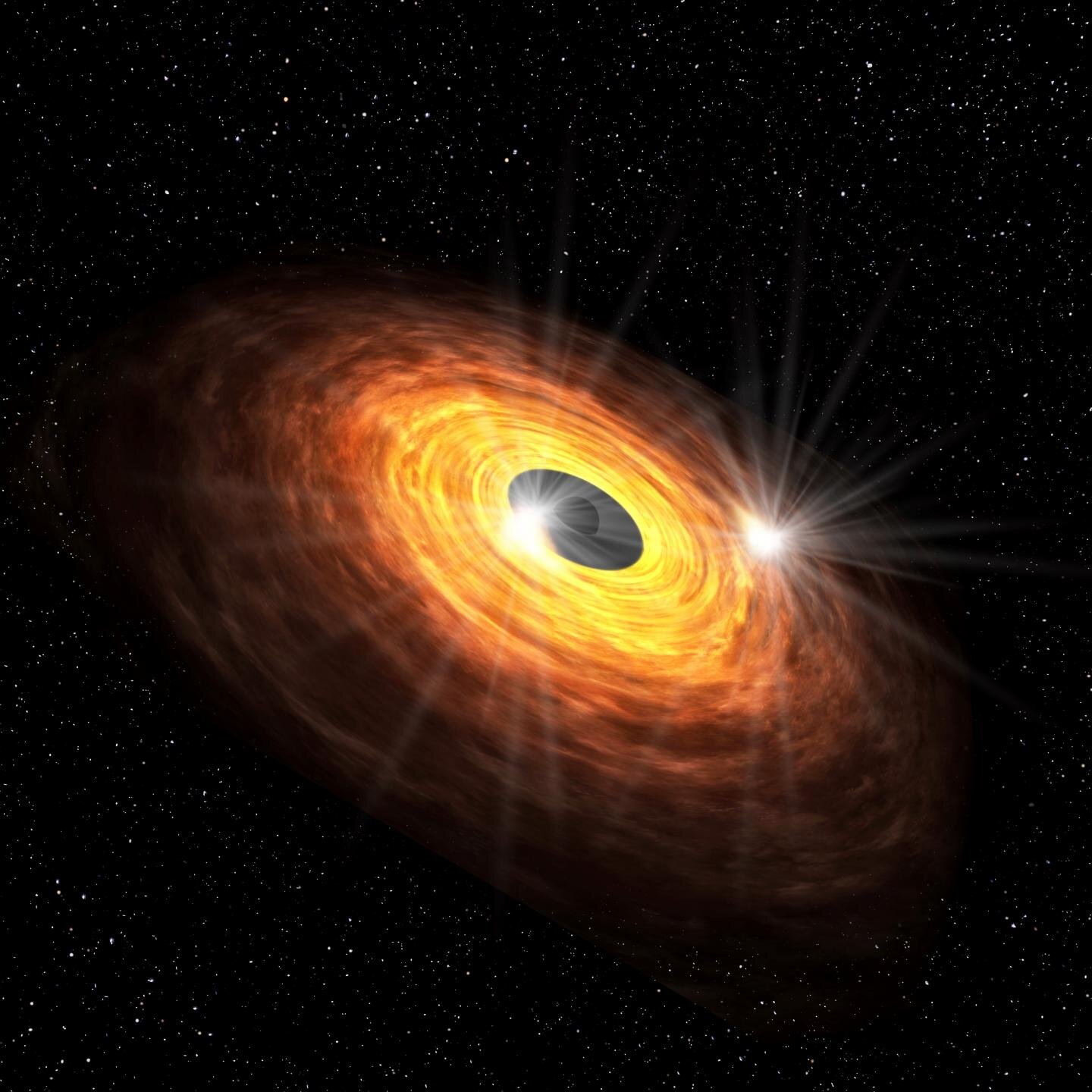
Credit: EHT Collaboration; Goddi et al., ALMA (ESO/NAOJ/NRAO); Kravchenko et al.; J. C. Algaba, I. Martí-Vidal, NRAO/AUI/NSF.
Work gives clues about how powerful jets are driven. The Event Horizon Telescope (EHT) has produced a new image showing details of the magnetic fields in the region closest to the supermassive black hole at the core of the galaxy M87. The new work is providing astronomers with important clues about how powerful jets of material can be produced in that region.
A worldwide team of astronomers using the Event Horizon Telescope, a collection of eight telescopes, including the Atacama Large Millimeter/submillimeter Array (ALMA) in Chile, measured a signature of magnetic fields — called polarization — around the black...
Read More









Recent Comments